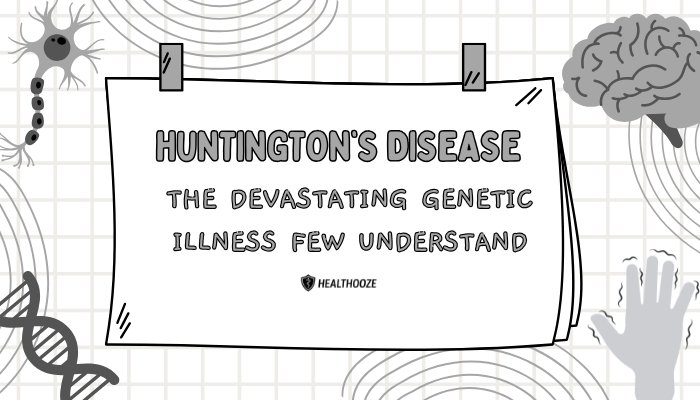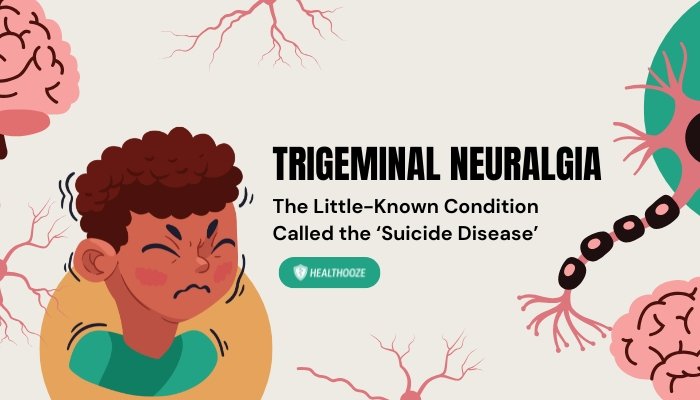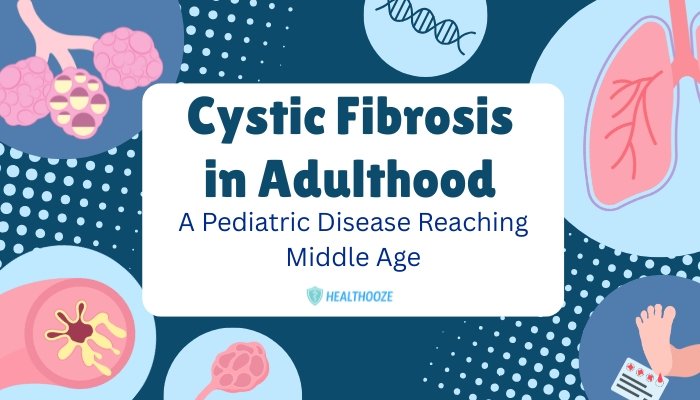Introduction
Huntington’s disease (HD) is an inherited neurodegenerative disorder that gradually affects a person’s ability to move, think, and regulate their emotions. Named after American physician George Huntington, who first described it in the late 19th century, the condition typically manifests in mid-adulthood and progresses over 10–30 years.
As HD advances, it leaves individuals reliant on caregivers for daily activities, impacting families both emotionally and financially. Despite these serious implications, Huntington’s disease remains widely underrecognized, and misconceptions abound.
This article explains how Huntington’s disease develops, what symptoms to look for, how it’s diagnosed, and the current management approaches aiming to preserve patients’ quality of life.
By shedding light on this rare but severe condition, we can foster a greater understanding of the profound challenges faced by those with HD—and the hope new research brings for improved care and future therapies.
What Is Huntington’s Disease?
Genetic Underpinnings
Huntington’s disease is caused by an expanded CAG (cytosine-adenine-guanine) trinucleotide repeat in the HTT gene, located on chromosome 4. The gene encodes the huntingtin protein, which, when mutated, acquires toxic properties, leading to neuronal dysfunction and eventual cell death. Typically, an individual has fewer than 36 CAG repeats; having 40 or more repeats almost invariably leads to Huntington’s disease. Inheritance is autosomal dominant, meaning each child of an affected parent carries a 50% risk of inheriting the expanded HTT gene.
Prevalence and Onset
Huntington’s disease affects roughly 3 to 7 per 100,000 people of European descent; numbers vary across regions and ethnicities. Symptoms often begin between the ages of 30 and 50, though juvenile cases can appear earlier—often with more severe progression. The overlap between psychiatric and neurological features, plus a wide range of symptom onset, can contribute to delayed or misdiagnosis.
Key Symptoms and Disease Progression
Movement Disorders
- Chorea: One of Huntington’s hallmark signs, these are involuntary, dance-like movements that may start subtly and worsen over time.
- Motor Incoordination: Fine motor tasks—like writing, buttoning shirts, or using utensils—become challenging. Some patients also experience muscle rigidity or dystonia in later stages.
- Difficulty Swallowing and Speaking: As facial muscles weaken, speech articulation and safe swallowing deteriorate.
Cognitive Impairments
- Executive Dysfunction: Problems with planning, organization, and multitasking appear early and progressively hamper independence.
- Memory Loss: While memory deficits may be milder than in some dementias, short-term recall and verbal fluency often decline.
- Slowed Thought Processing: Patients might take more time to respond to questions or interpret new information.
Psychiatric and Emotional Manifestations
- Depression and Anxiety: Emotional lability can be one of the earliest signs, sometimes leading to social withdrawal or suicidal ideation.
- Irritability and Apathy: Personality changes, lack of motivation, or impulsive behavior can strain relationships.
- Obsessive-Compulsive Tendencies: Repetitive thoughts or actions occasionally surface, complicating the daily routine.
Disease Stages
- Early Stage: Slight involuntary movements (chorea), subtle cognitive shifts, or mood swings may be noticed by close friends and family.
- Middle Stage: Movement challenges and cognitive impairment intensify, affecting speech clarity, self-care, and daily tasks.
- Late Stage: Patients usually require full-time care. Mobility, speech, and cognition are greatly compromised; however, many can still understand conversation though communicating is difficult.
Diagnosing Huntington’s Disease
Clinical Evaluation
A thorough neurological exam to detect chorea, muscle incoordination, or other movement disorders helps raise HD suspicion. Evaluating psychiatric history is also crucial if patients report mood swings, anxiety, or changes in personality.
Genetic Testing
- Confirmatory Test: Checking for the expanded CAG repeats in the HTT gene.
- Predictive Testing: At-risk individuals (due to an affected parent) might opt for genetic counseling and testing prior to symptoms, though this involves deep emotional and ethical considerations.
Neuroimaging and Additional Workups
- MRI or CT Scan: May reveal atrophy in certain brain areas (e.g., caudate nucleus), but imaging findings alone are not diagnostic.
- Psychological Assessments: Identify cognitive deficits or psychiatric issues separate from or preceding motor symptoms.
Living with Huntington’s Disease: Everyday Realities
Physical Management
- Fall Prevention: Home modifications like grab bars, removing tripping hazards, and using assistive devices (walkers) mitigate fall risks.
- Nutritional Support: As swallowing difficulties worsen, specialized dietary plans or feeding tubes might be necessary.
- Speech/Occupational Therapy: Exercises to maintain swallowing safety, motor dexterity, and communication strategies.
Emotional and Social Support
- Family Caregivers: Partners or adult children frequently take on roles of medication management, personal care, and emotional support.
- Support Groups: Both local and online communities provide knowledge, solidarity, and coping strategies for patients and caregivers.
- Respite Services: Periodic breaks via adult day centers or short-term care can relieve caregiver stress.
Financial and Work-Related Struggles
- Early Retirement: Symptom progression may force people to leave the workforce prematurely, losing income and social engagement.
- Insurance and Disability: Navigating coverage for specialized long-term care, physical therapy, or home health aides can be overwhelming without guidance.
- Estate Planning: Because Huntington’s is degenerative, advanced planning for legal and financial matters ensures smoother transitions if mental capacity declines.
Treatment and Symptom Management
Medications
- Tetrabenazine or Deutetrabenazine: Specifically target chorea by depleting presynaptic dopamine, improving movement control.
- Antipsychotics: Haloperidol, risperidone, or aripiprazole can help manage severe aggression, psychosis, or uncontrollable movements.
- Antidepressants: SSRIs or SNRIs address depression, anxiety, and irritability.
Psychotherapy and Counseling
- Cognitive Behavioral Therapy (CBT): Helps individuals manage depression, adapt to cognitive decline, and maintain coping skills.
- Family Therapy: Encourages better communication within the household, focusing on shared strategies for dealing with a member’s changing behaviors.
Rehabilitation Therapies
- Physical Therapy: Exercises to maintain balance, prevent contractures, and retain independence in daily motions.
- Speech Therapy: Techniques for clearer speech articulation and swallowing safety as muscles weaken.
- Occupational Therapy: Adapts daily routines, ensuring tasks remain feasible for as long as possible.
Emerging and Experimental Treatments
- Gene-Silencing Approaches: Research trials with antisense oligonucleotides (ASOs) aim to reduce the mutant huntingtin protein’s production.
- Neuroprotective Strategies: Investigations into growth factors or agents that might slow neuronal damage.
- Stem Cell Research: Although still in early stages, scientists examine whether transplanted cells can replace or support lost neurons.
Ethical, Emotional, and Genetic Counseling Dimensions
The Burden of Genetic Risk
Since each child of an affected parent has a 50% inheritance chance, family planning can become fraught with anxiety. Some consider prenatal testing or preimplantation genetic diagnosis to avoid passing on the expanded gene, but these choices provoke complex ethical and personal debates.
Psychological Readiness for Testing
- Predictive Testing: People at risk must weigh emotional readiness for possible positive results. Knowing one’s genetic future can drastically alter life choices, from career planning to relationships.
- Counseling: Genetic counselors guide individuals through the pros and cons, offering emotional support through the decision-making process.
Impact on Relationships
- Spousal Dynamics: Partners may shift to caregiving roles, altering intimacy and daily responsibilities.
- Family Care: Siblings or adult children may also worry about their genetic status, or feel “survivor’s guilt” if they test negative.
Fostering Awareness and Community Support
Advocacy Groups
Organizations like the Huntington’s Disease Society of America or European Huntington’s Association host events, support families, and lobby for expanded research. Their online resources connect global patients, provide caregivers tips, and track emerging clinical trials.
Local Action
- Fundraising Walks and Educational Seminars: Offer communities an up-close look at the experiences of those living with HD.
- Peer Networks: In-person or virtual meetups help families share coping strategies, bridging geographical barriers.
The Importance of Media Portrayals
Positive, informed representation in documentaries, films, or interviews counters stigma. Careful journalism clarifies that individuals with Huntington’s remain integral members of society, not mere victims of a condition.
Moving Forward: Hope on the Horizon
Despite the gravity of Huntington’s disease, progress in genetics and neurology signals potential breakthroughs:
- In-Depth Genetic Understanding: Pinpointing modifying genes that slow progression could lead to personalized medical interventions.
- Neuroprotective Trials: Ongoing global research aims to shield neurons from the mutant huntingtin protein’s damaging effects, potentially delaying onset or slowing progression.
- Expanded Clinical Infrastructure: More specialized clinics, improved mental health support, and telemedicine services can ensure that even remote areas have some access to HD expertise.
While no cure exists yet, these advances hint that future generations might see gentler disease courses or earlier intervention that transforms HD from a fatal degenerative disorder into a manageable condition.
Conclusion
Huntington’s disease presents profound physical and emotional challenges, demanding an integrated approach to both immediate care and long-term hopes. Genetic inheritance and progressive neurological decline shape its complexities, often leaving patients and families coping with overwhelming changes. Yet, from advocacy groups to cutting-edge gene therapies, the landscape is evolving.
Society can rally around those impacted—promoting informed discussions, ensuring mental health resources, and championing research to unearth more effective therapies. By fostering empathy and scientific vigor, we dismantle the isolation and fear that can accompany such a rare and formidable illness, lighting the path toward a future in which Huntington’s disease no longer defines the destinies of those who carry its gene.
References:
-
- Gusella JF, Wexler NS, Conneally PM, et al. A polymorphic DNA marker genetically linked to Huntington’s disease. Nature. 1983.
-
- Huntington Study Group. Unified Huntington’s Disease Rating Scale: reliability and consistency. Mov Disord. 1996.
-
- Ross CA, Tabrizi SJ. Huntington’s disease: from molecular pathogenesis to clinical treatment. Lancet Neurol. 2011.
-
- Orth M, Handley O, Schwenke C, et al. Observing Huntington’s disease: the European Huntington’s Disease Network’s REGISTRY. PLoS Curr. 2012.
-
- Wild EJ, Tabrizi SJ. Therapies targeting DNA and RNA in Huntington’s disease. Lancet Neurol. 2017.
-
- Ghosh R, Tabrizi SJ. Clinical features of Huntington’s disease. Neurotherapeutics. 2017.
-
- Bates GP, Dorsey R, Gusella JF, et al. Huntington’s disease. Nat Rev Dis Primers. 2015.
-
- Roos RA. Huntington’s disease: a clinical review. Orphanet J Rare Dis. 2010.
-
- MacLeod R, Tibben A. Frontline medical care in Huntington’s disease: specialized or integrated? J Neurol Neurosurg Psychiatry. 2016.
-
- Baig SS, Strong M, Rosser E, et al. 22 Years of predictive testing for Huntington’s disease: the experience of the UK Huntington’s Prediction Consortium. Eur J Hum Genet. 2016.







